Editorial

Dear Excipients Insight readers,
Welcome to the last edition of our newsletter for 2018. And a bumper edition it is!
It’s hard to believe that the year has passed so quickly and of course, it’s that time when we reflect on we did, what remains to be done and where to next?! First and foremost, and perennially, we remain ever thankful for those members who contribute so much to our efforts. And at the same time, we must recognise the companies that enable their employees to take part. Our working environment continues to present challenges so sincerely, your support of IPEC Europe and what it tries to achieve is very much appreciated.
At the end of November, the Board convened in Brussels and we held a workshop prior to the Board meeting itself, to discuss our Agenda 2020. We asked ourselves how far have we progressed on this journey, have our intentions been attained and looking beyond 2020, what will be different for us? After much discussion, we feel we are on track and can extend our roadmap to cover the next five year period but there are areas which we need to focus specifically, such as outreach and collaboration. We invest a lot to produce some excellent ‘products’ so we must be sure that we maximise their impact through alliances with key stakeholders not least at the EU level, where more formal relationships could greatly enhance the importance of excipients in the supply of medicines. As part of the AGM on 1 February 2019, we will present some of the highlights of our deliberations to you and our path forward.
Now, to move on to something which I’ve referred to throughout this and previous years, and that is the ‘H’ word. Yes! Harmonisation! There is a really though provoking piece in this edition on the Path to compendial harmonization – which way should IPEC Europe go? As the article say, we would like to discuss subject this in Malta at the AGM but I’d like to take this one step further. Many people arrive for the Forum on the previous day, 30 January to be precise, and I’d like to take advantage of this. Our surveys always show that harmonisation is important to you but recently we have not been successful in converting that desire into tangible deliverables. So, we plan to organise a discussion group after the conclusion of the Committee / Task Force meetings on 30 January. This will allow anyone who attends to freely express their thoughts and help determine where we take those ideas so concisely expressed by Frank Milek in this issue. If you’d like to join the debate, please inform the Secretariat and more details will be provided. 2019 is the year in which we need to decide on action, or not as the case may be, so please sign up!!
So, those are my key messages as we close 2018 and all that remains for me is to wish you a wonderful holiday season and a healthy and prosperous 2019. And hopefully, I will see many of you in Malta!
Frithjof Holtz
IPEC Europe Chair
IPEC/PDA task force makes progress on excipients technical report

IPEC Federation’s collaboration with the Parenteral Drug Association (PDA) on pharmaceutical excipient good manufacturing practice (GMP) risk continues, with a meeting held in Berlin in the summer to discuss the creation of a technical report on the subject.
Since 1 March 2016, EU regulations have required pharmaceutical manufacturers to ensure appropriate levels of GMP for excipients through application of formalized risk assessments, and the intention is that a joint technical report will be another valuable tool for companies maintain compliance with that requirement.
IPEC and PDA’s collaboration on this topic started earlier this year, when the two organisations signed a memorandum of understanding to develop a technical report that would complement IPEC’s own “how to” document on excipient risk assessment – published in March 2016 – as well as a joint IPEC Europe/IPEC-Americas guide on risk assessment for excipient manufacturers that was published the following year.
At the Berlin meeting, representatives from pharma companies presented models for global solutions to introduce risk assessments for all excipients – oral, parenteral, inhalation, etc. – and these will serve as generic risk assessment models within the planned technical report. A supply chain matrix will be included to outline the different responsibilities of all parties within the supply chain, including brokers and contract manufacturing organisations (CMOs).
The task force completed a draft of the technical report’s overall framework in December, and the next step will be a peer review by experts at PDA and IPEC. The intention is to have the finalised technical report published sometime in the first quarter of 2019.
IPEC Europe is being represented on the task force by Frithjof Holtz of Merck KGaA – the association’s chair – as well as Iain Moore (Croda) and Karl Kuma (AstraZeneca). IPEC-Americas representation comes from Janeen Skutnik Wilkinson (Biogen) and David Klug (Sanofi).
Path to compendial harmonization – which way should IPEC Europe go?
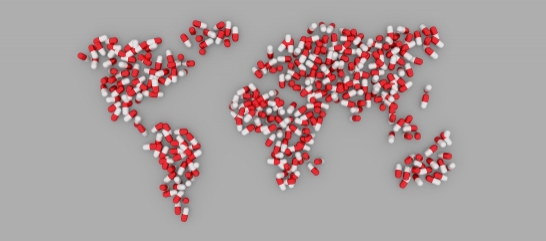
It’s no secret that the harmonisation of pharmacopoeial texts is an important consideration for pharmaceutical manufacturers trying to operate in a global marketplace, but can also be a frustratingly slow process.
For more than 25 years, IPEC Europe has provided input and support to the Pharmacopoeial Discussion Group (PDG), which works to deliver harmonised texts within the European, US and Japanese pharmacopoeias, in what has been a mutually beneficial and productive arrangement.
The compendial harmonisation team within IPEC Europe has however been under-resourced of late, prompting the Board to pose the question: can we look at revitalising this group, perhaps by introducing different approaches to harmonisation that have the potential to deliver more immediate value to IPEC members?
At our next Annual General Meeting (AGM) in Malta next year, the Board would like to spend some time discussing our association’s approach to harmonisation, and hear members’ ideas on this important topic. While cooperation with PDG will of course remain at the centrepiece of the team’s activities, there is interest in exploring some complementary activities.
To give one possible example, it is already clear that many pharma manufacturers – faced with divergent compendial requirements from the pharmacopoeias on test methods and excipient monographs, for example – have adopted what has become known as “internal harmonisation”.
This means that companies take the different compendial methods for the same test in monographs and try to find a scientifically sound rationale to run a single test that can be held to satisfy the requirements of multiple pharmacopoeias. At the moment, there is no guideline available to help companies follow a consistent way to apply that approach in practice – and perhaps developing such a guide would be a valuable task for IPEC’s harmonisation committee.
That’s just one possible way forward, and Board would love to hear from members who may have other ideas on how to extend and enhance the scope of IPEC’s harmonisation activities. With that in mind, don’t hesitate to put forward ideas and proposals via the Secretariat that can be discussed at the AGM early next year.
Why excipient master files? Learn more in Malta

One of the highlights of IPEC Europe’s next Annual Excipients Forum in Malta will be a panel session on the role of excipient master files (EMFs) in facilitating the wider use of novel excipients, and thus removing potential barriers to innovation in Europe.
In contrast to Japan, the USA, Canada and China, introducing a novel excipient in Europe can currently only be done through the drug product application. This means all these details, including proprietary manufacturing information, have to be shared with the drug product manufacturer and, paradoxically, this is not the case for active ingredients. As we have discussed in this newsletter previously (see Excipients Insight September 2018 edition) , what is lacking is a regulatory mechanism for independent review and qualification of new excipients, and EMFs could provide that.
The panel discussion in Malta – which will be chaired by Dr Liz Meehan of AstraZeneca – will provide an overview of the current master file position in Europe, compare and contrast with the situation in other global territories, provide a position representing the views of suppliers users of excipients, and then stimulate discussion and debate on the future state for EMFs in Europe.
In the meantime, IPEC Europe is drawing up a position paper and stimuli article to make the case for a European EMF system.
Be a part of the discussion. Registration is now open for the Annual Excipients Forum, and you can also take a look at a provisional programme. We hope to welcome you in Malta next year.
IPEC Europe hosts webinar on risk assessment

IPEC Europe held its fifth webinar on 8 November focusing on "Using Risk Assessment to define a GMP Strategy for Excipients".
Dr. Iain Moore, Croda, analysed how risk assessment can be used to identify Good Manufacturing Practices-related hazards and improve the quality management system in production plants. Throughout the webinar, Iain polled the participants on different scenarios which helped make the event interactive.
The webinar was well-attended and it is pleasing to note that our webinars are increasingly attracting only IPEC Europe members but also more and more non-members.
Participants reported a high level of great satisfaction with the quality of the presentation and the information received, and reported that they would be interested in participating in other webinars organised by IPEC Europe in the future.
Keep an eye on our website for our future events!
IPEC Europe welcomes its latest team member

We are delighted to announce that Lola Morel joined IPEC Europe’s on 5 December as Office Manager at the Secretariat in Brussels, Belgium.
With a Master’s degree in Cultural Management, a Diploma in Translation and diverse professional experience in organizations in Belgium, France and Spain, Lola happily chose to leave the restaurant she was working for since 2017 to help with the day-to-day smooth functioning of the IPEC Europe Office. We are very happy to count welcome her to the team.
Register now! 2019 IPEC Europe Annual Excipients Forum
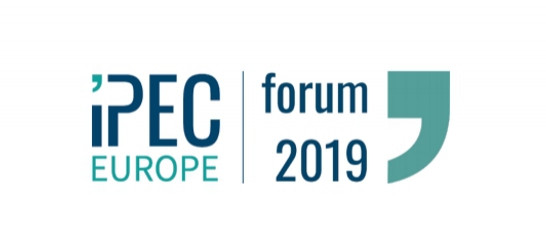
Thursday 31 January 2019 - The Westin Dragonara, St Julian's, Malta
Join us in Malta on Thursday 31 January 2019 for a dynamic conference recognised to be one of the key events for pharmaceutical excipients in Europe, on the theme of excipients integrity.
The year to come will formalise the exit of the United Kingdom from the European Union. Don’t miss the opportunity to explore the potential impact of Brexit on the pharmaceutical supply chain with Peter Gough, NSF.
We will also discuss in a panel session the Excipients Master File and the different experiences in various regions. Experts from Europe, United States and China will convene to present the status quo in their regions.
Many other “hot” topics will be covered, have a look at the exciting programme!
Discover the programme
The IPEC Europe Forum is an event not to be missed for all experts in the field!
Share your views and experiences beyond the Forum sessions with speakers and renowned specialists from the industry, academia and regulatory agencies.
We look forward to welcome you in Malta!
Register now
IPEC Europe calendar
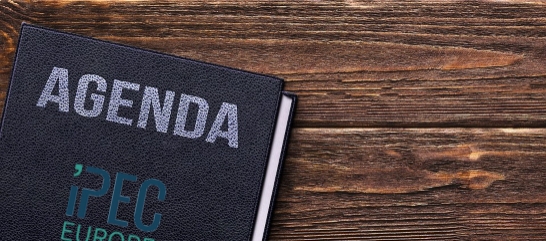
| Group |
Q1 2019 |
| IPEC Europe Board |
TC January 2019 |
| GDP Committee |
30 January (St Julian's, Malta) |
| Pharmacopoeial Review & Harmonisation Committee |
TBC |
| Quality & Regulatory Affairs Committee |
30 January (St Julian's, Malta) |
Packed programme at recent QRAC meeting

The Quality and Regulatory Affairs Committee met on 28 November 2018 in Brussels. Selected highlights follow. For more information, please contact the IPEC Europe Secretariat.
Some time was spent finalising the details of two documents which have been worked on throughout the course of 2018, namely a position paper on Excipient Master Files in Europe and points to consider when evaluating primary packaging materials for use with excipients. Strategies for targeting key stakeholders on these subjects will be communicated in 2019. Also, final recommendations were made on the QRAC Regulation Review Process, which will be piloted on the next set of draft regulations to be published.
Another of QRAC’s key functions is to monitor regulatory developments, and an update was given on the implementation of ICH Q3D guidelines on Elemental Impurities which seems to be progressing well without too many issues. It was also reported that the ICH Q3C Residual Solvents requirements were revised on 15 October 2018 – including a new permitted daily exposure (PDE) for Ethylene Glycol – and did not appear to follow the ICH consultation process. QRAC is looking further into this.
China featured prominently in discussions including the comments recently submitted via the IPEC Federation comments on recent draft guidelines – including the Chinese Pharmacopoeia (ChP) Guideline for Suitability Study of Pharmaceutical Excipients and Guideline for Production of Control Quality of Animal-Derived Pharmaceutical Excipients. Via the IPEC Federation, we hope to have better visibility of the work plans of the Chinese regulators to facilitate the review process.
A report was given on the latest position on Titanium Dioxide / E171 and the Coalition which is being formed to address France’s unilateral action relating to the stated withdrawal of foods distributed in France containing this material. Also, information was shared on US FDA UNII Codes created for multi-substance ingredients such as excipient mixtures.
The group brainstormed possible objectives for 2019 and their financial impact. These will be finalised at QRAC meeting on 30 January in Malta and presented at the 2019 AGM (1 February).
GMP Task Force updates on ISO revisions
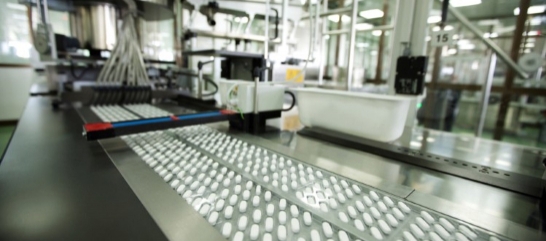
IPEC Europe’s GMP Task Force met in Brussels on 7-9 November along with their counterparts at IPEC-Americas and a representative from the Pharmacopoeial Discussion Group (PDG) to advance the project on revising the GMP guide.
The task in hand is to re-arrange the existing text of the GMP Guide under ISO 9001:2015 headings, and also to update the guides to include ‘how to’ information. The latter will include illustrative examples to help excipient suppliers and pharmaceutical manufacturers comply with the requirements, as well as examples of non-compliance to avoid.
The application of ISO 9001 elements to the world of excipients introduces “new language” that requires a translation into IPEC’s current guides, says Astrid Stockrahm-Uhling, IPEC Europe’s lead on the Task Force. Nevertheless, “we had fruitful discussions and made good progress,” she says.
Another face-to-face meeting is planned in February 2019 to finalise the re-arrangement of the GMP Guide text under ISO 9001:2015 headings.
EU lays out cosmetic industry commitments post-Brexit

The European Commission has issued advice to companies operating in the cosmetic products field on the implications of the UK’s withdrawal from the EU.
The notice shows how the role of the ‘responsible person’ designated to ensure only cosmetic products that comply with regulatory requirements are placed onto the market will change post-Brexit. In particular it notes that the responsible person – or the organisation he or she works for – must be established within the EU.
As of the withdrawal date, that person cannot be established in the UK. That means that for cosmetics manufactured in the UK either an EU-located responsible person must be designated, or someone at the organisation that imports them into the EU will have to fulfil that function.
The same applies if the cosmetic product is manufactured in another third country, imported into the UK and subsequently imported into the EU27 member states, according to the Commission.
Other elements of the notice cover notification procedures, the Product Information File and labelling.
USP plans to revise plastics packaging chapters
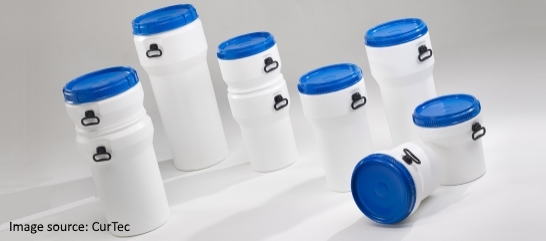
The Packaging and Storage Expert Committee US Pharmacopeia (USP) posted a Notice of Intent to Revise on October 26, 2018, to provide notice that the Committee intends to revise the following USP chapters:
<659> Packaging and Storage Requirements
<661> Plastic Packaging Systems and Their Materials of Construction
<661.1> Plastic Materials of Construction
<661.2> Plastic Packaging Systems for Pharmaceutical Use
<1661> Evaluation of Plastic Packaging Systems and Their Materials of Construction with Respect to Their User Safety Impact
USP says the purpose of the proposed revisions will be to provide an implementation period extension of the requirements specified in General Chapters <661.1> and <661.2>, which otherwise were to become applicable on May 1, 2020 through reference in General Chapter <659>; and to allow early adoption of the requirements in General Chapters <661.1> and <661.2> at any time during the implementation delay period.
It expects the proposed revisions will be published in Pharmacopoeial Forum 45(2) [March–April 2019], with a pre-posting on the USP Website on January 1, 2019.
EDQM hails WHO move to discontinue innocuity test for biologics
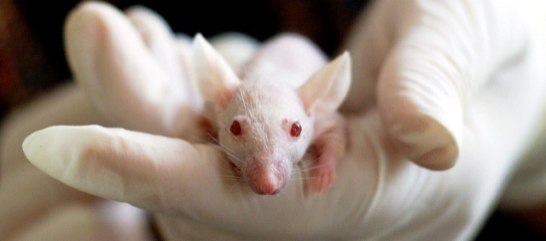
The European Directorate for the Quality of Medicines and Healthcare (EDQM) has welcomed the recommendation of the WHO Expert Committee on Biological Standardization (ECBS) to omit the abnormal toxicity test – also called the innocuity test – in all future WHO documents on vaccines and other biological products, and to disregard the inclusion of this test in previously published WHO Technical Report Series documents.
The ECBS recommendations, issued at the Committee’s 69th meeting, are based on the consideration that the omission of the abnormal toxicity test would not compromise the quality and safety of vaccines and other biological products.
The European Pharmacopoeia (Ph. Eur.) Commission endorsed the complete suppression of the test for abnormal toxicity from the European Pharmacopoeia (Ph. Eur.) in November 2017. As part of this exercise, 49 monographs were revised to remove references to the test for abnormal toxicity and it was decided to completely suppress general chapter Abnormal Toxicity (2.6.9), as it would no longer be referenced in the Ph. Eur. The decision is reflected in Supplement 9.6 of the Ph. Eur. and will become effective as of 1 January 2019.
This testifies to the commitment of the EDQM and of the Ph. Eur. Commission to reduce the use of animals in pharmacopoeial testing, in line with the Council of Europe’s Convention for the Protection of Vertebrate Animals used for Experimental and other Scientific Purposes.
Animal tests such as the abnormal toxicity test were developed for the safety testing of human vaccines at a time when limited scientific knowledge for the quality control of biological products existed. Over the past decades, the strenuous work of the Ph. Eur. Commission and its counterparts at global level has allowed for the identification of viable alternatives to the use of animals for tests, while still ensuring high levels of protection for human health. In particular, today’s manufacturing processes, including the Good Manufacturing Practices (GMP) and in-process quality controls, can ensure a more appropriate level of quality and safety for vaccines and other biological products than the abnormal toxicity test.
EDQM revises guideline on requirements for revision/renewal of CEPs
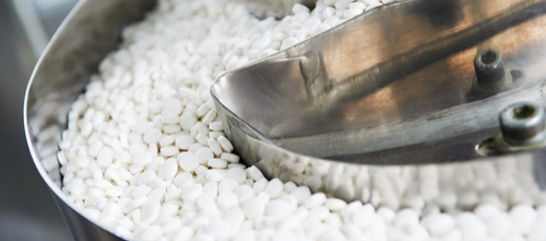
The revised EDQM ‘Guideline on requirements for revision/renewal of Certificates of Suitability to the European Pharmacopoeia Monographs’ (PA/PH/CEP (04) 2 7R) will enter into force in January 2019.
Notable changes include the classification of changes related to the introduction of a new manufacturer of a starting material, explicit reference to recent changes in the regulatory environment e.g. ICH M7 or, in the context of the implementation of ICH Q3D in the Certification procedure, the possibility to introduce/change a Risk management summary (RMS).
More information is available here.
Mixed views on Brexit in ECA supply chain survey
A survey of 125 industry professionals conducted by the European Compliance Academy has revealed that around a third (30%) of manufacturers of finished medicines, active pharmaceutical ingredients and excipients have taken steps to stockpile supplies to minimise the effect of Brexit on their supply chain, but the same proportion has taken no such steps.
The split is also similar when it comes to predicting the impact of Brexit on supply chains, with 28% of respondents expecting disruption, 33% expecting no disruption, and around 22% saying they don’t know. Most of the respondents (86%) were from medicine manufacturers, with 12% from API and excipient producers.
Drug shortages
Looking at the last three years, a clear majority (60% of respondents said they had already experienced problems with shortages, with 23% reporting this had not been a problem. The most common shortage issue was API/excipients, reported by half of those surveyed, with quality issues at contract manufacturers and respondents’ own facilities the next most commonly reported issues.
Good Manufacturing Practice (GMP) non-compliance during manufacturing was the most common quality issue leading to shortages, but a poor audit result – for example at an API or contract manufacturing site – also featured highly.
Just under half said that regulators needed to have a closer dialogue with the manufacturers, while more than a third said it would be useful to have a list of alternative manufacturing sites in the event of an issue.
Just over a third also reported that there is a need for an EU-wide database to formally notify authorities of drug shortages.
Recommended reading

‘Colour is crucial’: Capsule choice more than a brand statement
The colour of a capsule can play an important role in the safety of a product and provide consumers with intuitive information for dosage, according to Nicolas Madit of Lonza.
In-PharmaTechnologist.com
Guideline on the environmental risk assessment of medicinal products for human use
The purpose of this guideline is to describe the assessment of the potential environmental risks and hazards of human medicinal products (HMP). It specifies the scope and legal basis for assessment. It outlines general considerations and the recommended step-wise procedure of assessment. The general outline of the Environmental Risk Assessment Report is included, and for products for which risks cannot be excluded, this guideline outlines the possible precautionary and safety measures.
[Note: Excipients are not in the scope unless they have toxicological effect].
ema.europa.eu (PDF)
Fragmentation of EU GMP – not in patients’ best interest?
The original structure of EU GMP made perfect sense; Chapters 1 to 9 contained the baseline GMP expectations that are required for all medicinal products and the Annexes contained additional, detailed GMP for different types of product. In the past year the European Commission has moved away from this logical model by issuing completely different GMP requirements for different product types. This fragmentation of GMP has not been supported by industry and is being progressed against the advice that the Commission has received from regulatory authority experts within the EU and PIC/S.
Peter Gough, NSF Health Sciences (via LinkedIn)
Approaching tablet formulation step by step
Tablet formulation development is a stylised process. Each formulator uses their own methodology. Some use the systematic Design of Experiments (DOE) approach, some test one variable at a time, and many use a combination of the two. However, all formulators need a methodology that gives them reliable and useful information to identify problems before tablet manufacturing begins.
European Pharmaceutical Manufacturer
Developing lipid-based formulations
Lipid-based formulations (LBFs) may improve oral bioavailability by exploiting the body’s lipid digestion and absorption pathways, offering a proven means of addressing the physicochemical and biological challenges of poorly soluble APIs. LBFs can be complex systems, so their development requires a multifaceted approach, and experience in how to approach their development provides significant benefits. With the availability of robust delivery systems, such as the softgel dosage form, LBFs can offer formulators potential benefits, provided that the most appropriate excipients are selected.
PharmTech.com
Formulating a plan for toxicology studies
GLP toxicology studies are designed to provide an insight into a drug’s safety profile, however, formulations need to be carefully developed before these studies can be effectively performed. In this article, Stephie Lee, scientist, Oral Drug Delivery at Catalent Pharma Solutions, goes through the important considerations for a successful GLP toxicology study outcome.
European Pharmaceutical Manufacturer
Events calendar

Here is a round-up of forthcoming events of interest to suppliers and users of excipients. Please let the IPEC Europe Secretariat know if we've missed one.
CPhI & PMEC India 2018
Mumbai, India – 12-14 December 2018
More information here.
IPEC Europe Annual Excipients Forum
St Julian's, Malta - 31 January 2019
More information here.
DCAT Week '19
New York City, NY - 18-21 March 2019
More information here.
Excipient World Conference and Expo
National Harbor, MD - 6-8 May 2019
More information here.
CPhI Worldwide
Frankfurt, Germany - 5-7 November 2019
More information here.
|